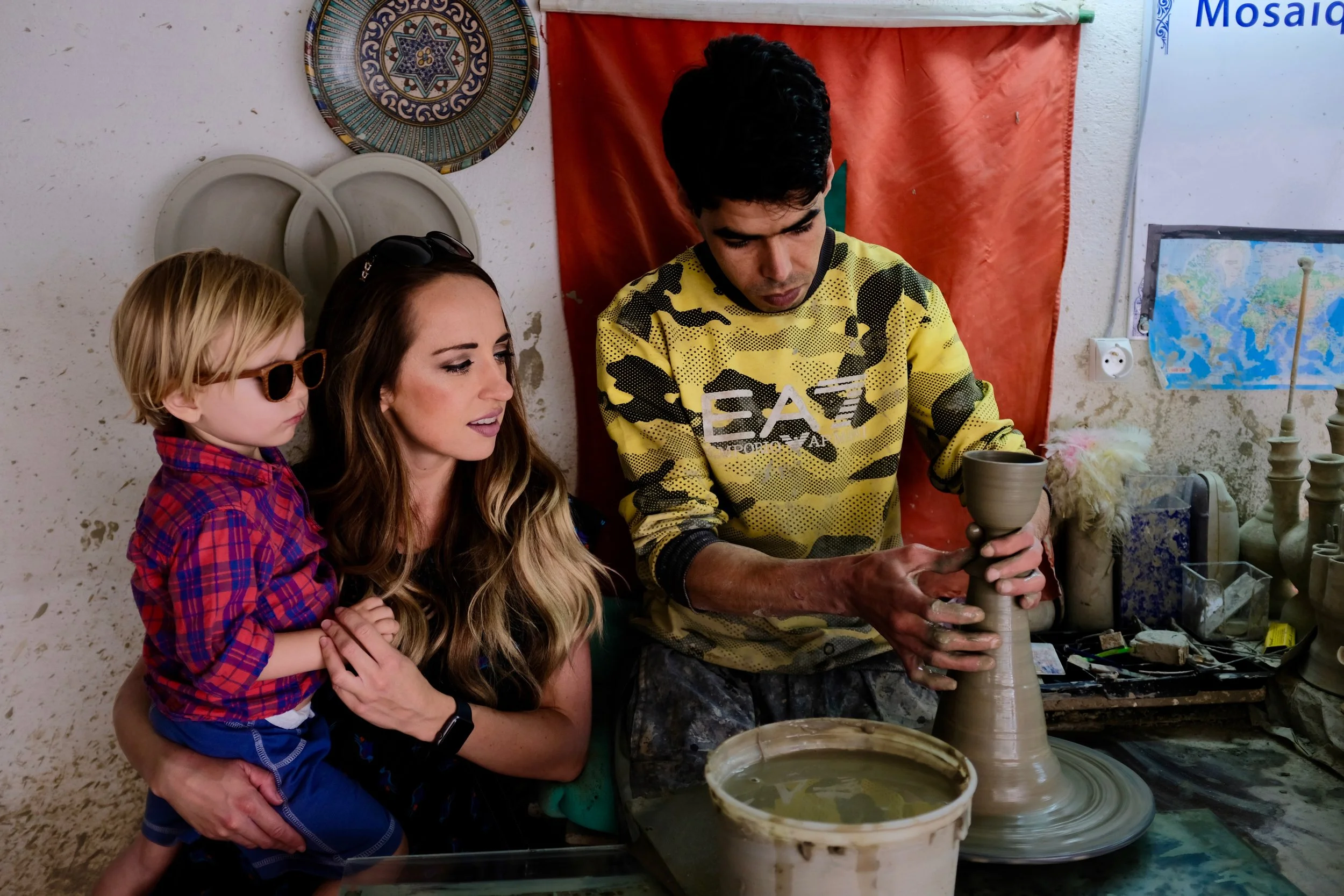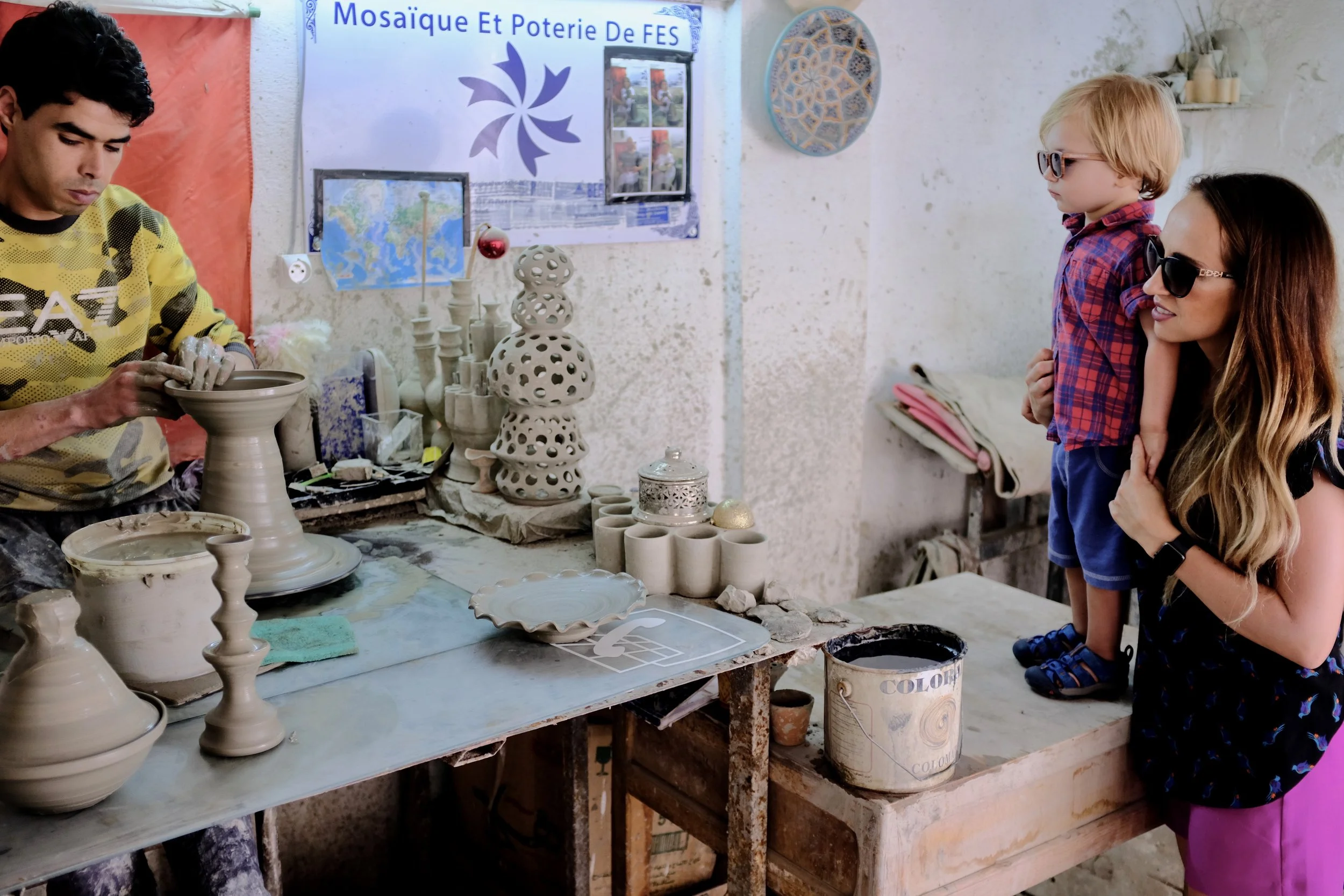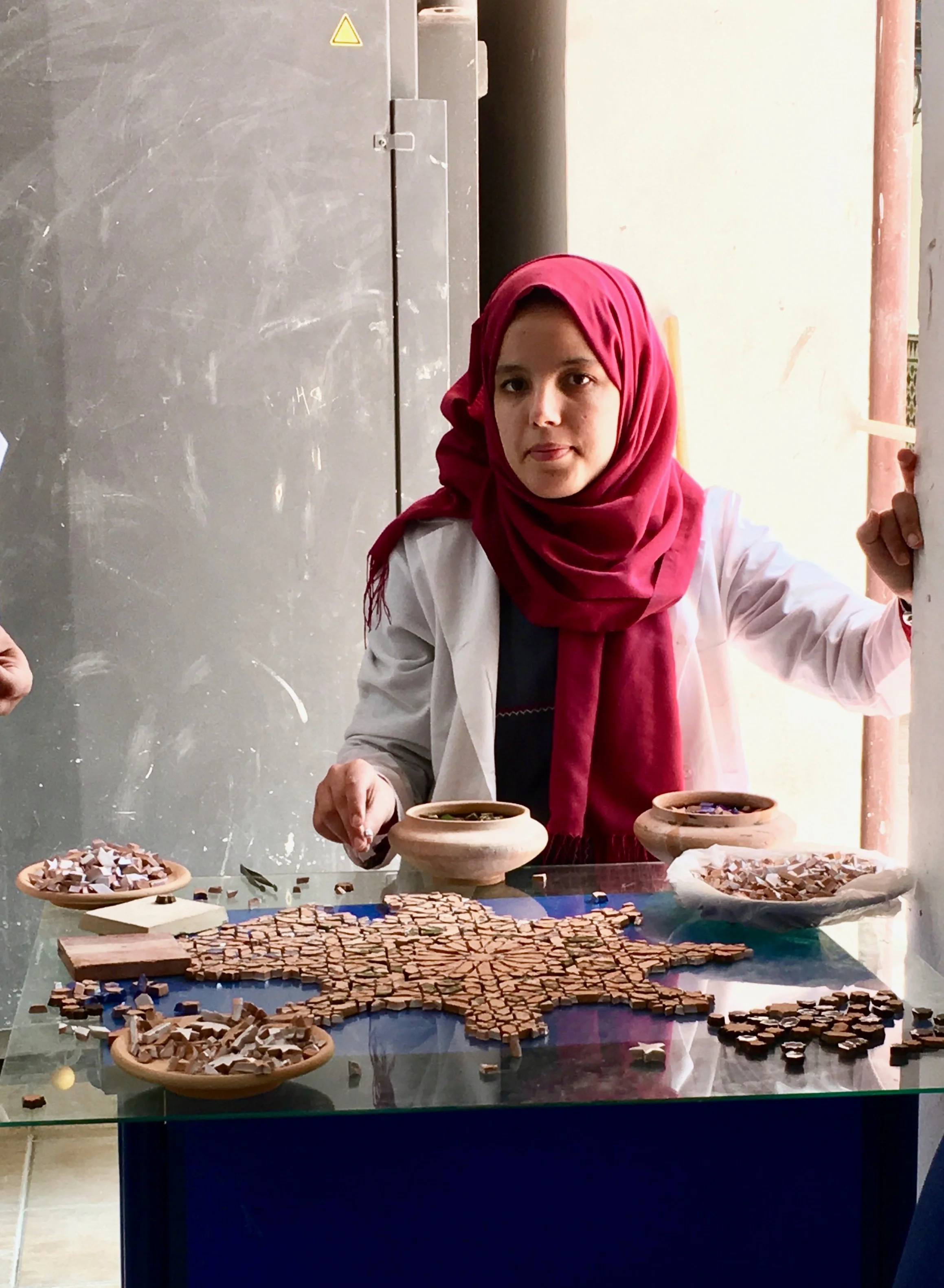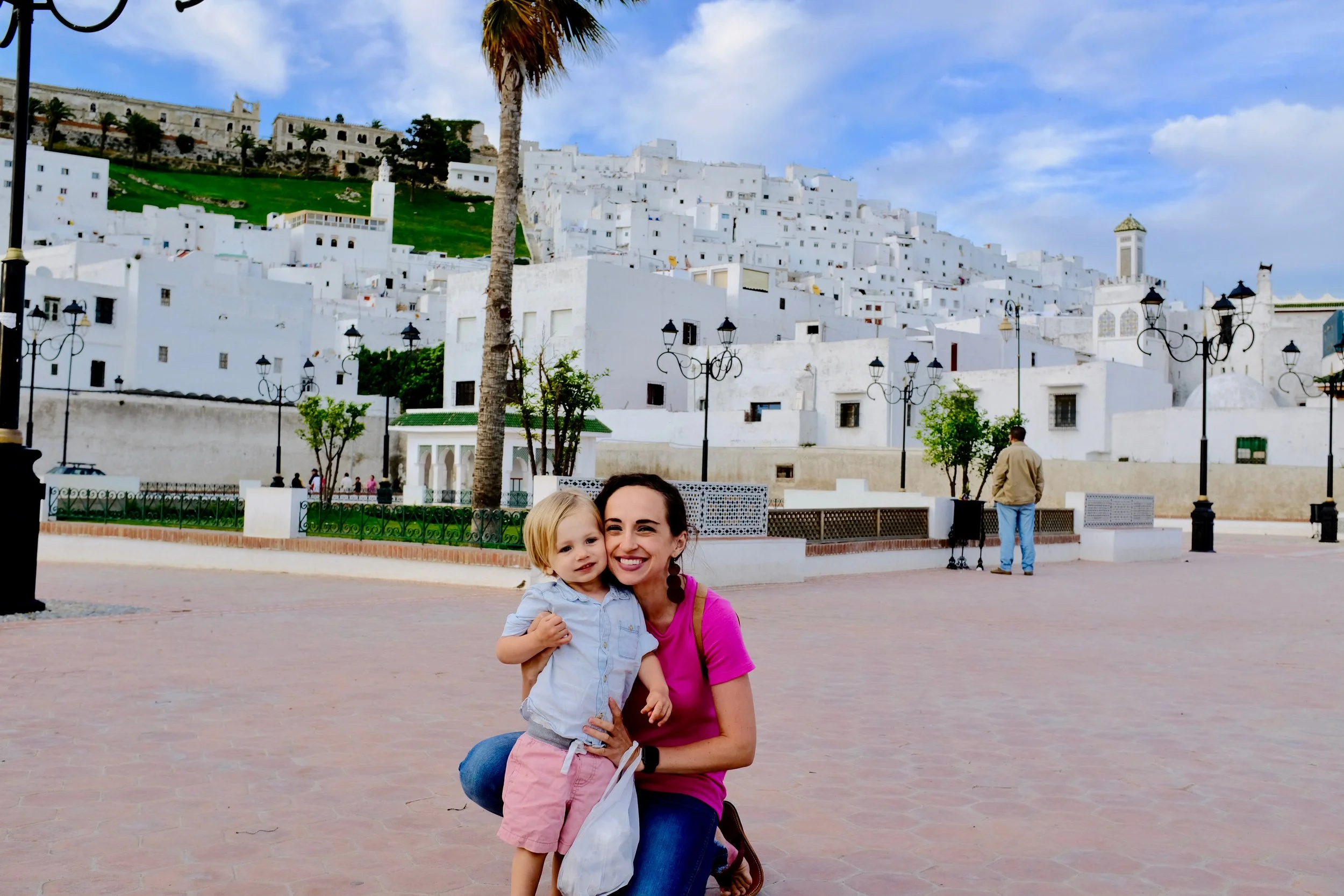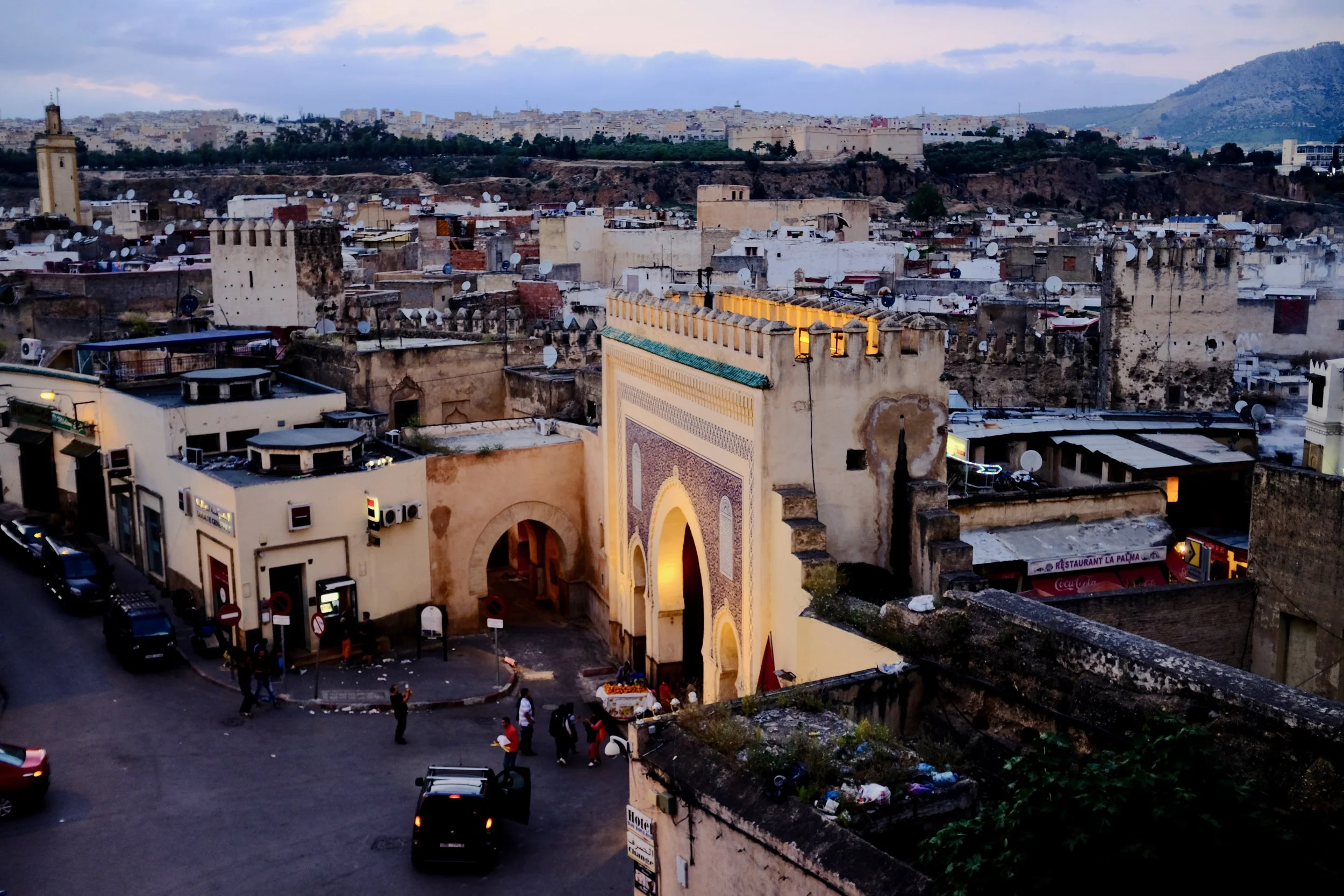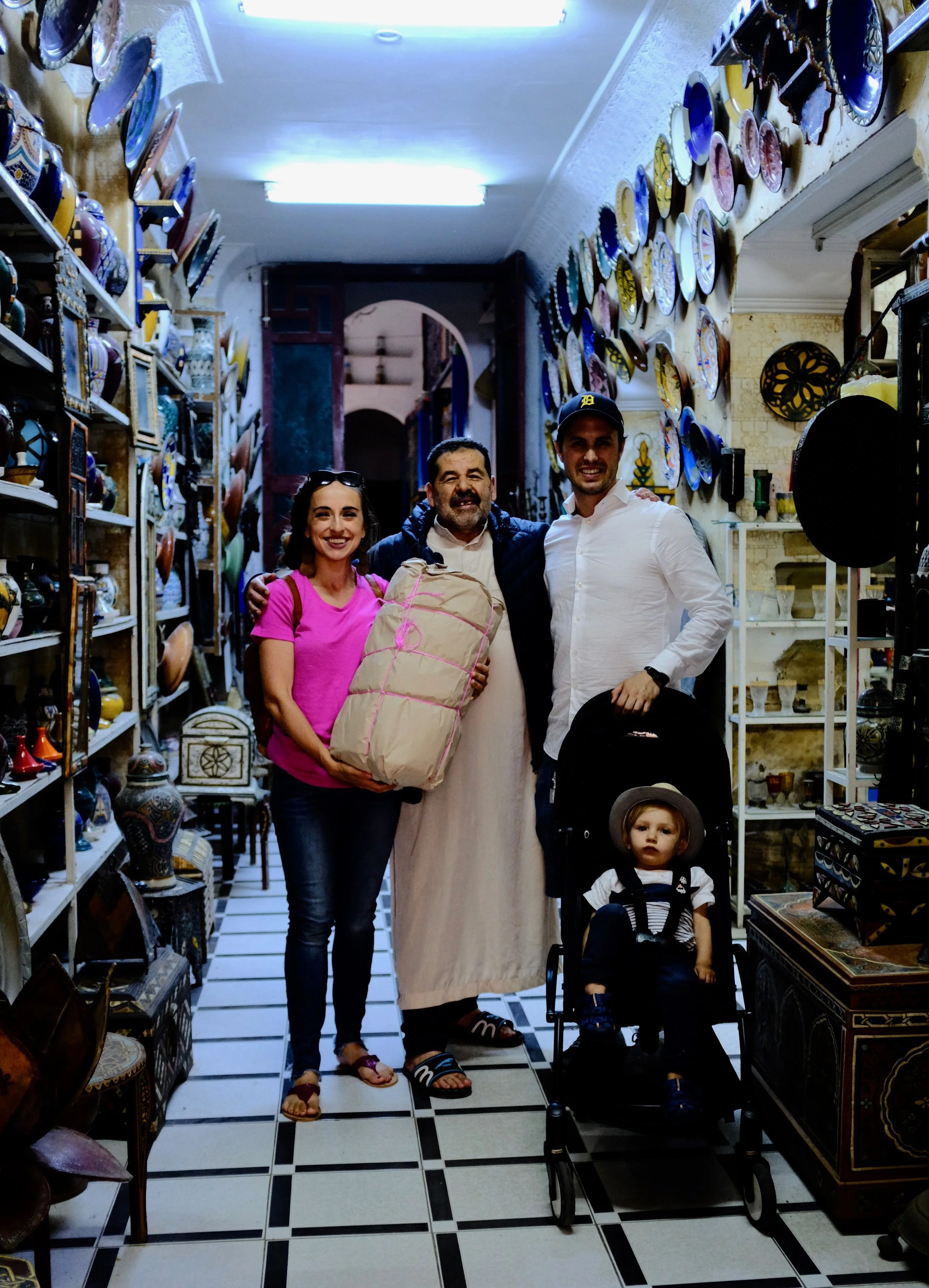Moroccan Handicraft Tours – Fez and Tétouan Morocco
I remember a conversation that I had with my teenage niece about four years ago. She was talking about different crafts and projects that she had up her sleeves. She kept repeating an acronym that I wasn’t familiar with. Finally, I innocently asked her, “What does DIY stand for?” I remember the look of shock on her face and also a slight smirk in her lips. She replied, “DIY, Do It Yourself.” At the time I didn’t think much of it, but now looking back, I realize how naive and stupid I was for not knowing that common acronym. It was something that I should have known but I didn’t, and the fact that I didn’t know it made me look like I had been living under a rock. I guess that shows how uncrafty I am, or at least how much of a priority that I put on being crafty. Spoiler Alert! It isn’t a priority for me.
I share this story because the people of Morocco, unlike me, are VERY crafty. The are artisans in their trade. They are the definition of DIY. From a young age they learn how to make things with their hands and create things from scratch to eventually sell to the public. Their life and family depend on it because it is how most of them support themselves. I got a peek into the world of Moroccan handicrafts when we were in both Fez and Tétouan, and I now have the upmost respect for the Moroccan people and their talents in the DIY department.
Mosaïque Et Poterie De Fes – Fez, Morocco
The concierge in our hotel in Fez recommended for us to go to the Mosaïque Et Poterie De Fes. It is a place that specializes in all different types of Moroccan handicrafts and shows you step-by-step how they are made. Even though this place was more touristy than I usually prefer to go to when I travel, and maybe a tad setup, it was still fascinating. Jimmy was especially into it, completely mesmerized the whole time. He was so well behaved, content with just standing and watching these people at work. It was fun because we were able to get very close to the artisans while they were in the process of creating, and fully observe them. When we visited it wasn’t crowded, so it felt like we had our own private tour with just us and the artisans.
Our favorite artisan was the pottery maker. I could have watched him all day. Watching someone work with clay is so relaxing to me. I love seeing how they shape the clay and mold it to look how they want with only their two bare hands. I was so impressed with the shapes that this man was able to create and the items that he produced, like bowls, vases, tagines, and candlesticks. He whipped them out so quickly like it was nothing. The painters were also fun to watch. They were so meticulous in their work, making sure every stroke of their paintbrush was exactly on point. They have to have such steady hands to successfully make the products turn out the way that they do, without any errors. They also worked impressively quick, finishing each job and then moving onto the next.
The Mosaïque Et Poterie De Fes is free to enter, however, they do put quite a lot of pressure on you at the end of your tour to buy something in their shop. The shop is huge with so many options of things to buy, all very beautiful. We bought a small blue and white mini double tajine to hold salt and pepper. I wanted to buy the whole shop, but Nate gently reminded me that my small NYC apartment wouldn’t be able to fit all of it without looking like a hoarder. The other problem was getting the items home without them breaking. They do offer to ship things home for you if you can’t bring it home yourself in your suitcase, and they also wrap your items up very well to protect them in bubble wrap and paper. There are no prices, (normal for Morocco) so feel free to haggle with them to get a fair price. The starting “prices” were extremely high, and they knew it. They often try to take advantage of you and get as much money from you as they can, betting that you aren’t confident in your haggling skills or knowledgable in the Moroccan purchasing system. Most tourists aren’t. Check out my post her for some tips on haggling!
Royal Artisan School with Green Olive Arts – Tétouan, Morocco
One of the most interesting things that we did during our time in Tétouan was visit the Royal Artisan School with Green Olive Arts. It was here that we got to see college aged students learning and mastering different Moroccan trades and craftsmanships. Traditionally, these skills are passed down from parent to child, with the parents teaching their children little by little until they can do it independently and confidently on their own. However, in Tétouan, students have the opportunity to attend a program where they learn from the very best, the masters of the art if you will. They learn and use the traditional tools and methods at this school, the way that Moroccans have done it for generations. This is the best program for learning these trades in all of Morocco, the Harvard or Yale of Moroccan handicrafts.
Walking into the classrooms and seeing these students at work, busily creating adjacent to their teachers, is something that I’ll never forget. They were so kind to let me snap pictures of them while they worked. They were making such gorgeous things that most people outside of Morocco wouldn’t have a clue how to make. They used clay and wood in ways that I had never seen before.
The Moroccan mosaics were incredible. It seems like kids now days are busy coloring and using stickers to create “mosaic” type of art projects. I’ve seen several products recently that are making this activity popular among kids. Well in Morocco they aren’t coloring pictures of mosaics or using stickers to create them, but they are actually making real ones. The mosaics we saw that day were fascinating - so many intricate tiny pieces that fit together to complete the whole puzzle and make the design. And what a puzzle it was! You have to have a lot of patience to complete even one mosaic I’m sure, because the time that goes into completing even one seems very tedious. All of the pieces are made by hand and then assembled together by hand as well. So much work, but when you see the finished product, you realize why Moroccans continue to do it this way. These finished products continue to be in such high demand within Morocco among both locals and tourists. Gorgeous!
I hope you grew an appreciation for the time and effort that it takes to create Moroccan handicrafts just like I did when I was there. If you’re planning a trip to Morocco and have a question or comment, I’d love to hear from you in the comment box below.

